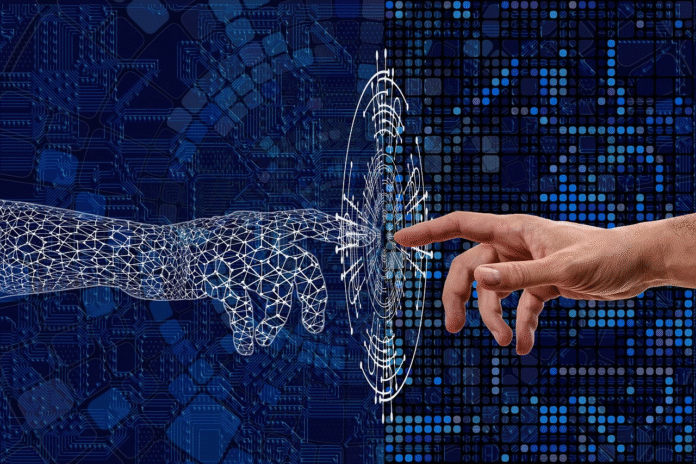
In the rush to embrace sleek, minimalist designs, we’ve lost something vital: a genuine, sensory connection to the technology we use every day. In her insightful piece, “Our Interfaces Have Lost Their Senses,” Amelia Wattenberger critiques the direction that modern digital interfaces have taken—arguing that they’ve become sterile, detached, and ultimately less engaging. Through her eloquent words and interactive design, she challenges us to rethink how we interact with technology, urging a return to interfaces that engage not just our eyes, but our sense of touch, sound, and motion as well.
The Evolution of Digital Interfaces: From Tangible to Flat
Technology has advanced rapidly, shaping how we live, work, and play. But as it has progressed, something has been sacrificed along the way. The physical, tactile experiences that once accompanied our interactions with devices have become a distant memory. Remember the satisfying click of a button, the feedback from a mechanical switch, or the satisfying whirl of a dial? These sensory interactions once made using technology feel real and alive.
Today, however, the majority of our interactions with digital devices take place on flat screens. Touchscreens, voice assistants, and minimalist interfaces dominate the landscape, creating sleek, efficient experiences—but at what cost? While these designs may look polished, they often feel hollow. The physical feedback, the subtle cues that made technology feel “alive,” are largely gone. Touchscreen swipes and voice commands may be convenient, but they lack the immersive, sensory richness that once made technology feel like more than just a tool.
Amelia Wattenberger’s article goes beyond a typical critique of design trends. She actively demonstrates the problem as she presents it. As you scroll through the post, you’re not just reading about the issue—you’re experiencing it. The article itself is a beautifully designed, interactive piece that gives you a tangible sense of the void left by the rise of flat, impersonal interfaces. The design is smooth and polished, but with each scroll, you can’t help but feel how much we’ve lost in the pursuit of simplicity.
The Sensory Disconnect
There’s no denying that the past few decades have been revolutionary in the realm of digital design. Touchscreens, for instance, have transformed how we interact with everything from smartphones to home appliances. But these advancements have come with a price. By moving away from the physical interactions of the past, we’ve left behind the rich sensory feedback that made technology feel more personal.
With the rise of flat, digital interfaces, the experience of interacting with technology has become increasingly visual. Our screens are more responsive and visually appealing than ever, but they’re often devoid of the tactile qualities that made older interfaces satisfying. The physical act of pressing a button, turning a dial, or even hearing the distinct sound of a key being pressed is something we now take for granted, or worse, no longer experience at all.
In her article, Wattenberger argues that this shift towards sterile, “one-dimensional” interactions represents a loss of connection—not just with our devices, but with our humanity. Technology should do more than simply function; it should engage us. It should create a sense of immersion, one that extends beyond mere visual input. When we interact with a device, whether it’s through sound, touch, or even motion, it should feel alive. Our senses should be stimulated, drawing us deeper into the experience.
A Vision for the Future: Bringing Back Sensory Interfaces
Wattenberger’s call to action is clear: it’s time to bring back sensory engagement in our digital experiences. She envisions a world where our interactions with technology are rich and immersive, responding to our touch and actions in ways that create meaningful, memorable experiences. Imagine interfaces that not only look stunning but respond to your touch with physical feedback—a slight vibration or a subtle sound when you tap a button, or a fluid motion that mirrors your movements.
Such designs could make technology feel less like an abstraction and more like an extension of ourselves. Interfaces could communicate with us in ways that are tactile, dynamic, and engaging, reminding us that technology isn’t just a tool we use; it’s something we interact with, something that responds to our actions in meaningful ways.
One of the most powerful aspects of Wattenberger’s article is the way it demonstrates the very principles she advocates for. As you engage with the interactive design, you’re pulled into a deeper reflection on how technology could be more enriching and immersive. Her own work serves as a proof of concept, showing us that it’s not just possible but essential to create interfaces that feel as good as they function.
The Challenge: Let’s Bring Back the Senses
The time has come to stop settling for flat, lifeless interfaces. We must demand designs that aren’t just functional but also sensory-rich—designs that involve us in a deeper way, that invite us to touch, listen, and feel as we interact with technology.
This shift won’t just improve the way we use devices; it will change how we experience the world through technology. By reintroducing tactile feedback, sound, and motion into our interactions with tech, we can create richer, more meaningful connections with the devices that have become so central to our lives.
Amelia Wattenberger’s article is more than a critique of modern design; it’s a challenge. A challenge to rethink how we design, create, and interact with technology. So, let’s take a step back, reflect on what we’ve lost, and work towards bringing back the sensory experiences that once made technology feel more human. It’s time to reconnect with our interfaces—and in doing so, reconnect with ourselves.











